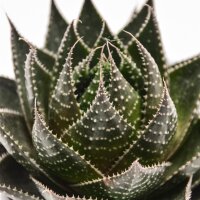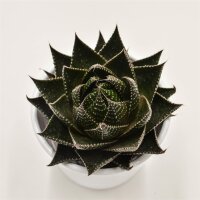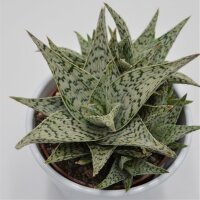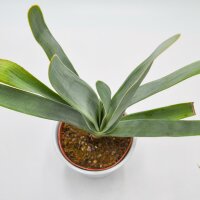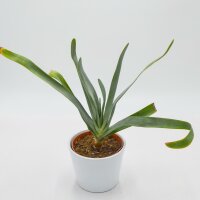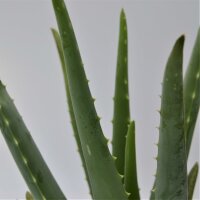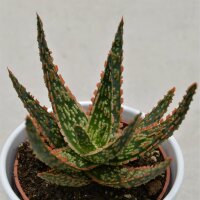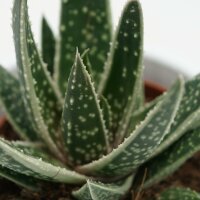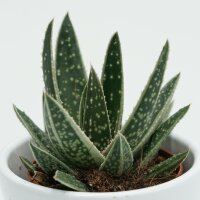Aloe
Aloes belong to the family of the Affodillaceae (Asphodeloideae) and comprise about 450 species. Most aloes are native to southern and eastern Africa and Madagascar. But they can also be found in the rest of Africa and on the Arabian Peninsula. Aloe vera in particular is cultivated as a useful plant in all tropical and subtropical areas of the world. Its long, lance-shaped leaves are thick, fleshy and contain a jelly-like tissue juice. They are usually arranged in rosettes, rarely in two rows. The flowering time is between March and May. The inflorescence develops near the centre of the rosette, which forms a bunch of orange, yellow or red flowers at the top. ##break## Aloes like a bright, sunny and warm location. The substrate should be well-drained and contain mineral components in addition to cactus and succulent soil. Excess water should be able to run off well, the substrate should be dried before the next watering to avoid stagnant moisture. Fertilizer can be applied approx. every three to four weeks with cactus and succulent soil. In summer you can put the succulent plants outdoors, but you should bring them back indoors at temperatures below 15°C. Before placing them in direct sunlight, you should gradually accustom the plant to the unfiltered sun. In winter the temperature should be around 15°C. Watering should only be done when the substrate is completely dry, fertilization is to be stopped. There is a yellowish sap in the leaf bark which is slightly poisonous.
